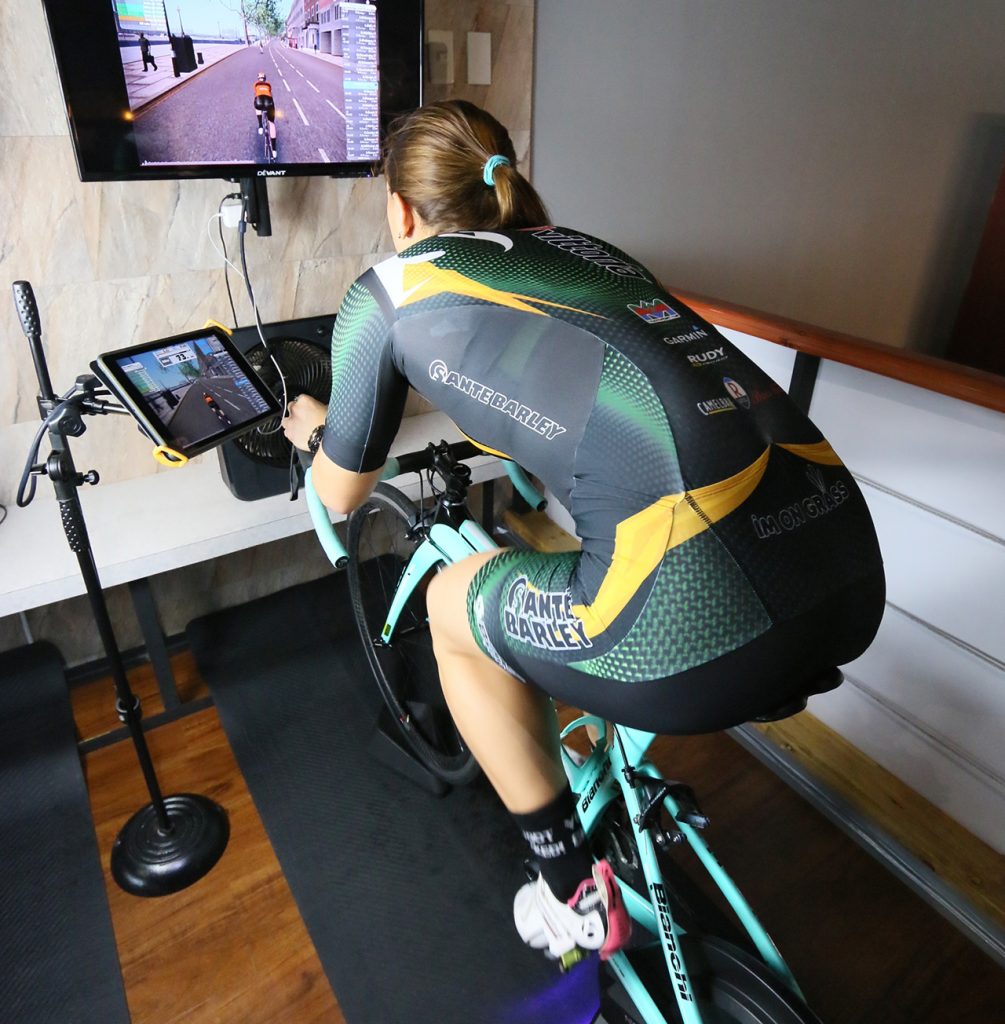“Insanity is doing the same thing over and over again and expecting different results” – Albert Einstein
Triathletes and cyclists are creatures of habit. They don’t “exercise”, they “train” for specific races in the calendar. With the COVID-19 pandemic that’s effectively killed off all races for the year, and at a time when the season had barely even started, it’s natural for scores of athletes to feel lost and disillusioned.
While the significance of racing pales in comparison to the thousands who have died around the world, and still more who have been afflicted with the disease, the inability to race and to get the best out of oneself is personal and demoralizing.
You wake up, log on to Zwift, and then what? Today’s ride will be followed by another session tomorrow, and the day after that, and so on, but there will be no race to truly test oneself.
There is no cathartic finish line.

“Racing is the kind of business where the customer pays you to make him suffer, and then thanks you afterwards!”, as a good friend and organizer shared to me once.
One of the biggest drivers of the triathlon industry is the Ironman brand, and with practically all races written off for 2020 and moved to 2021 (why don’t they just say they’ve been cancelled..?), Ironman has been valiantly keeping the fire burning by offer near-weekly virtual Ironmans in a duathlon format. It’s free, it’s (kind of) fun, it gives some sense of momentary closure to all the specific training that an athlete lives for.
But with no guarantee that racing will resume anytime soon – heck, who can really say 2021 will be any better?? – it’s tempting to just let go and FUCK IT. Spend a little more time on Netflix, sleep some more, relax those diet restrictions. And I would agree with you there… up to a point.
We’ve reached a point of training maturity where we pretty much know how much volume and intensity we need to hit a peak, what’s our ideal racing weight, what recovery modalities work and so on.
The key with managing our body and mind during these challenging times is to do just enough to keep you fit and healthy, but not necessarily race fit. Being fit and healthy means getting at least 8 hours of sleep a night, eating the right nutrients, and having the fitness to complete moderately challenging workouts without overly taxing your body, and being able to do this on a regular basis.
A healthy mind and body are your best defense against illness and depression. What you don’t want to be is race fit. There is NO race in the visible horizon: get over it. Being race fit means straddling that fine line between peak performance and illness as your immune system might be compromised from the necessarily heavy loads of race-specific training. You don’t need that yet.

It’s been said that this pandemic is a WAR against the virus. With that in mind, get into the mindset that you’re a warrior now, not a race horse. Picture how elite soldiers train everyday. In between missions, they do endurance workouts and strength sessions because the nature of their profession requires them to always be ready. They’re very fit, but I wouldn’t say they’re at peak specific fitness for a triathlon. They could finish one on any day if they had to, but who knows how much time it would take them.
Good training goals for this indefinite “base” season would be:
- Perfecting your technique. Smoothen out your pedal stroke, run more naturally and gracefully. You’ll be spending a lot of time on a trainer or treadmill. Lots of time to observe how you move until you get it right.
- Work on your weaknesses. Are you a slow climber? Does your time trial suck? Get your ass on Zwift and head for the hills. Every ride look for small improvements in your power, technique or just overall feeling.
- Spend time on strength training. Many triathlete pay lip service to strength training, but even half an hour of body weight training can pay dividends in increased force production. You should use the time to work on the following:
- Core Strength – a strong core will help you sustain a more aggressive position on the bike, as well as prepare your trunk for the day when the pool will be open again! Good exercises are planks, pushups, and lower back extension.
- Dead Lifts and Squats/Weighted Squats – Doing these exercises will improve glute strength and teach your body to maintain stability with your core and lower leg muscles. If you don’t have weights, improvise with a 5-gallon water jug.
- Pull-ups and Tricep Dips – while you’re away from the pool, use the opportunity to strengthen your upper back, shoulders, and triceps: usually the weakest muscles if your swim split is uncompetitive.
The continuing quarantine is a challenging period for many, but see it as an opportunity to come out a better athlete. Be thankful that you’re healthy and have the assets to still train despite the restrictions. Manage your energy efficiently, train smart, and you will be a stronger athlete when race season finally comes around.
You’re a warrior now.

